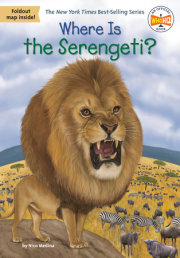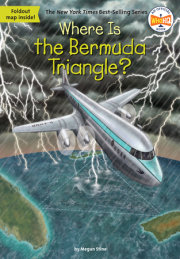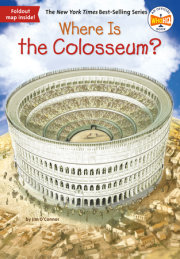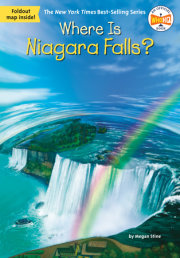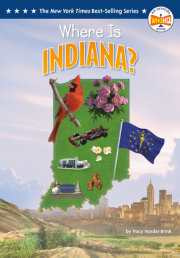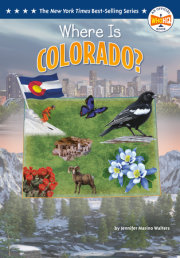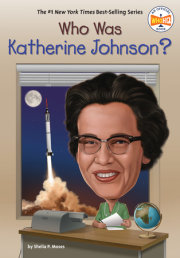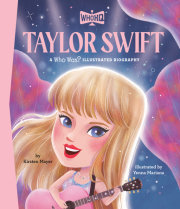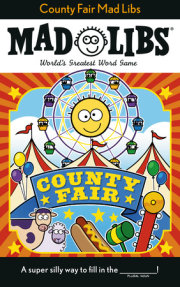Where Is Yellowstone? In 2022, Yellowstone National Park celebrated its 150th birthday. Most birthdays are celebrated on just one day of the year, marking the actual date that someone was born. But that’s not the case when you’re the first national park in the United States—and the world!
When you’re Yellowstone National Park, covering 3,472 square miles (that’s larger than Rhode Island and Delaware combined), your birthday celebration lasts for six months. There’s a lot to celebrate!
Unfortunately, due to the COVID-19 pandemic, the party wasn’t able to be as big as originally planned. There were no large in-person events, but there were some small ones at the park and lots of online festivities. The celebrations, which lasted from March to September 2022, included educational programs, a brand-new Tribal Heritage Center, free Junior Ranger programs, and a conference about the park’s future.
Even though Yellowstone’s birthday is marked as 1872, its history actually begins far before that date. And this area of the country wasn’t as untouched as most people think. For thousands of years, native people lived in and traveled through the region. And park officials made sure these people were honored at the birthday celebrations.
Yellowstone National Park’s creation led to many more national parks opening in the United States. Sequoia and Yosemite National Parks opened in 1890, and Mount Rainier was added in 1899. Today, there are sixty-three national parks, with the newest being New River Gorge in West Virginia, which was added in December 2020.
Thanks to Yellowstone National Park, the United States is now full of exciting national parks for people of all ages to explore. That’s certainly something worth celebrating—even when the birthday party is over!
Chapter 1 Old and New Yellowstone has been a national park for over 150 years, which might sound like a long time. But the amazing mountains, valleys, geysers, and waterfalls in the park were created by forces of nature millions of years ago.
The outer layer of the earth is made up of large areas called tectonic plates. These plates, which are miles and miles thick, are always moving—-but at a very slow pace. As the plates slowly shift, they come together, drift apart, or slide past each other. All this movement creates mountains and valleys and causes earthquakes and volcanic activity.
Most of the mountains, valleys, earthquakes, and volcanoes across the world occur where two plates meet. But Yellowstone is located right in the middle of one of the tectonic plates—-the North American Plate. Also in the middle of this plate is a huge mass of molten rock, or lava. Some of this lava has made (or oozed) its way to the earth’s surface over the past millions of years. As it has flowed across the landscape, it has created the natural wonders in Yellowstone.
The landscape of the Yellowstone region began forming about 150 million years ago. Many of the landforms in the park, mainly the mountains, were created around the beginning of the Cenozoic (say: see--nuh--ZOW--uhk) Era. (The Cenozoic Era, which means “recent life,” began 66 million years ago, and it is the period the earth is still in today.) Then about 30 million years ago, the area around Yellowstone began stretching. The canyons and basins seen in the park were formed during this time. (A basin is like a bowl in the earth’s surface. It is a depression, or dip, with raised sides.) And about 16.5 million years ago, a period of extreme volcanic activity took place.
Possible Prehistoric Park Residents Even though no humans were around to watch the formation of the mountains, valleys, geysers, and waterfalls in the Yellowstone area, there may have been some park residents who witnessed this—-dinosaurs. Scientists recently announced that a fossil discovered in the park in 1966 is the tooth of a young Tyrannosaurus rex. Thanks to this discovery, T. rex can claim to be the first identifiable dinosaur fossil to have been found within Yellowstone National Park. Fossils from other dinosaur species, including Allosaurus and Diplodocus, have been found in the area outside the park. Just over three hours away from Yellowstone is the Wyoming Dinosaur Center. It is home to one of the largest and most unique dinosaur fossil collections in the world. The first major eruption in Yellowstone took place about 2.1 million years ago. It is believed to be one of the largest volcanic eruptions ever to take place on our planet. The ash that was spewed out by the volcano covered a massive area. It dumped ash as far away as present-day Missouri, which is over 1,000 miles away. Scientists have found that other major eruptions occurred 1.3 million and 640,000 years ago.
Each time there was a volcanic eruption, the amount of magma under the surface was reduced. (Magma is molten rock when it is underground, and lava is molten rock that breaks through the earth’s surface). When the amount of magma was reduced in the eruptions, it left a caldera. (A caldera is a large volcanic crater). The volcanic eruption that took place 640,000 years ago formed a caldera that is about fifty-two by twenty-eight miles wide. Even with all these volcanic eruptions, there is still magma underneath the surface in the Yellowstone region.
What’s really amazing is that Yellowstone National Park doesn’t just have volcanoes—it is an active volcano. Not only is it an active volcano, but it is also a supervolcano. This means that it has had a huge eruption on a scale that geologists use to measure volcanic eruptions called the Volcanic Explosivity Index. This scale, which goes from zero to eight, is similar to the Richter scale, which is used to measure earthquakes. And the eruption that occurred in the Yellowstone area 2.1 million years ago is at the very top of this scale.
So, what are the chances of this supervolcano erupting in the future? Scientists say that it is possible, but it’s far more likely that Yellowstone will never have another gigantic eruption.
Chapter 2 First Settlers Once the ice melted after the most recent Ice Age, about 11,500–14,000 years ago, the Yellowstone region became home to all kinds of plants and animals. As the area got warmer and drier, native people followed. And for thousands of years before Yellowstone became a national park, it was a place where these native people hunted, fished, gathered plants, and used the hot springs for religious and healing purposes.
Archaeologists used to believe that ancient people could not have lived in an area that was at such a high elevation because of the harsh climate in the winter. (An archaeologist is someone who studies the things that people made, used, and left behind in ancient times.) But when artifacts such as stone tools and spear points were found in the park in the 1870s, scientists changed their opinion.
Scientists believe the native people used these stone tools and spear points for hunting bison, mountain sheep, and deer that roamed the area during that time. It is believed that they also gathered nuts, seeds, and fruit that grew in the region. And scientists have found hand-crafted bowls made from soapstone that were most likely used for storage and cooking. (Soapstone is a soft rock that can be carved into shapes.)
As time passed, the climate in Yellowstone changed. It has varied between warm and dry and cool and wet over the past ten thousand years. Many plants adapted to these changing conditions. The people in the area also adapted to the changing climate, and they continued to hunt the animals and gather plants that lived in the area. Scientists have actually found campsites and trails that were used by these native people thousands of years ago. In fact, some of the trails used in the park today were probably used by native people.
About three thousand years ago, more native people moved into the area and used it as a source of food, fuel, and building materials. During this time native people also began to use bows and arrows for hunting. They also used traps to capture animals, and it’s believed they built corrals—fenced-in areas—in which to keep bison.
The Tukudika Many tribes spent time in the Yellowstone area, but most left when winter arrived. However, members of one tribe, the Tukudika, stayed through the season. They are believed to be the earliest known permanent residents of what is now Yellowstone National Park. Tukudika means “eaters of the mountain sheep,” and the tribe was given the name because bighorn sheep were their main source of meat.
The tribe stayed at lower elevations in the winter months to avoid the worst of the deep snow and cold temperatures. But in the warmer months they traveled up into the mountains, following the sheep. Since it was difficult for horses to make their way up the rocky landscape, the Tukudika used dogs to carry their packs as they hunted. The dogs weren’t just used for carrying things—-they were sheep hunters, too!
The Tukudika lived in the Yellowstone area for thousands of years. But once the national park was established, they were moved to reservations in what is now Wyoming and Idaho. (A reservation is an area of land set aside by the US government for Native Americans where they can govern themselves and maintain their traditions.) Today, some descendants of the Tukudika still live on these reservations. Native people came to know the Yellowstone region very well. So when explorers and trappers who had sailed to North America began to make their way into the area, native people often acted as guides. Native people who lived in what is now North Dakota told the Lewis and Clark Expedition to follow a road that traveled to the source of the Yellowstone River. A group of native people guided a man named Warren Angus Ferris to the geysers along the Firehole River. Warren Angus Ferris, as well as other explorers and trappers, reported that the native people were afraid of the hot springs and geysers in the area. They claimed that the tribes believed that evil spirits came from the thermal waters—but that wasn’t the truth. Even though it was false, explorers and settlers continued to pass on this lie that the indigenous people were frightened by the geysers and hot springs in the region. Soon it became the story that was told about the area’s native people.
According to some native people, the spirits were actually kind and helpful. And if you approached the geysers and hot springs in a humble and gentle way, the power of these spirits could be harnessed. There is evidence that native people used hot springs for cooking food and bathed in the water for healing purposes. On occasion, they also buried their dead in the bubbling water instead of burying them in the dirt.
When the park was established in the late nineteenth century, the US government wanted the area to be seen as wilderness. The government didn’t want visitors to know that native people had been living in Yellowstone for a long time. The government was worried that the presence of native tribes in the park might scare some tourists and keep them from visiting. So, the lies about the tribes being afraid of the geysers and hot springs were repeated. The government used that false information as an excuse to move the native people off the land. The public was falsely told that native people had never lived in Yellowstone.
Within the past few decades, Yellowstone National Park and the US government have been working to tell the true story of how native people were and still are connected to the area. They want people to know that native people have lived in the area for thousands of years but were forced to move out of the park when it was established in 1872. It is important that the history of the region include the history of the native tribes, the original humans to love and take care of the land.
Copyright © 2024 by Penguin Random House LLC. All rights reserved. No part of this excerpt may be reproduced or reprinted without permission in writing from the publisher.



















